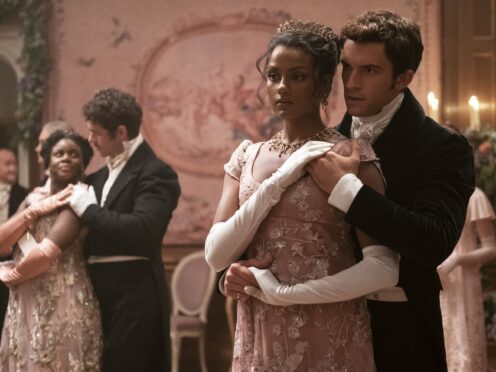Bridgerton star Simone Ashley has said the sex scenes in the show are not “performative” and are instead “earnt” when they do occur.
The 26-year-old actress plays Kate Sharma in series two of the hit Netflix show, which follows the eight siblings of the Bridgerton family as they attempt to find love in Regency-era London.
Speaking ahead of the release of latest series, Ashley defended the show’s use of intimate scenes, saying: “They aren’t performative sex scenes or intimate scenes, they have a meaning behind them and I think they’re very earnt when the fireworks happen.”
Bridgerton became the most-watched show on Netflix when it was released on Christmas Day 2020, thanks to its often racy and risque scenes between the show’s original protagonists Daphne Bridgerton (Phoebe Dynevor) and Simon Basset (Rege-Jean Page).
The show’s second series shifts its focus to the tumultuous courtship between Anthony Bridgerton, played by Jonathan Bailey, and Ashley’s character Kate.
The show’s creator Chris Van Dusen explained: “It was never about quantity for us.”
Adding: “We’ve never done a sex scene for the sake of doing a sex scene and I don’t think we ever will.
“It all serves a larger purpose and it’s a different story this season.
“Different characters, where we’re with Anthony and Kate most of the season and that’s very different from Daphne and Simon.”
Bridgerton is based on a series of books by Julia Quinn, with series two taking its inspiration from the second book The Viscount Who Loved Me.
Bailey, 33, added: “I think Kate and Anthony feel explicit in the way that they feel naked in front of each other.
“And it’s a very cerebral way of exploring that sort of innate sexuality.
“And I think it bodes very well for the following seasons to just not be expected for it to just be about the sex.”
Bridgerton series two arrives on Netflix on March 25.
